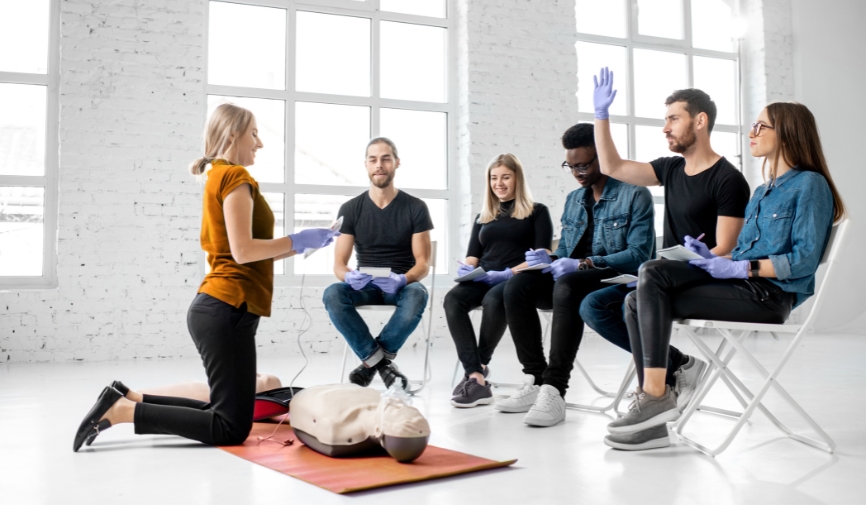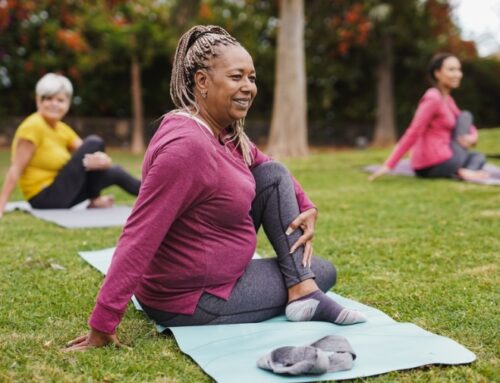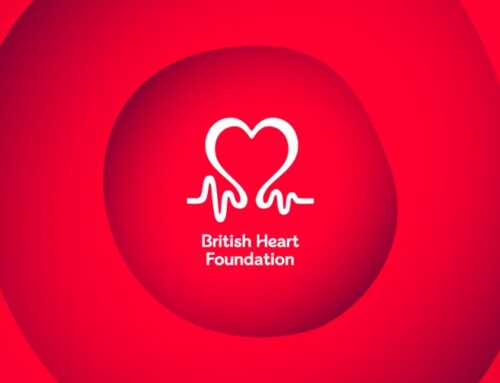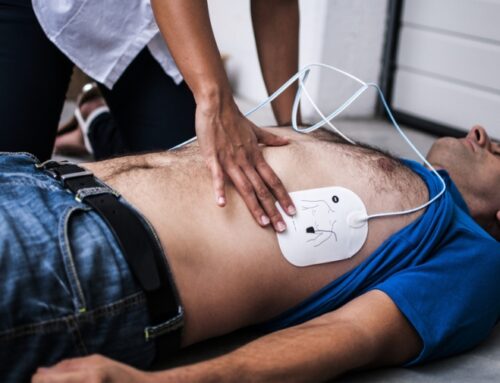As CPR trainers will know, in an emergency situation, the performance and capability of those administering resuscitation is the difference between life and death. That’s why ensuring the CPR that we all perform is of the highest possible quality is an objective necessity. But how do we achieve this?
CPR is a skill set where practice definitely makes perfect. By emphasising precision, objectivity, and transparent feedback, studies show that learners can see a clear improvement in the quality of their resuscitation. So, let’s take a look at the importance of objective quality CPR training and see how it can benefit learners and trainers alike.
Increased Survival Rates
The simplest way that high-quality CPR techniques can improve outcomes is through their impact on survival rates. The chances of survival correlate directly with the quality of CPR administered.
When every second counts, a well-executed chain of survival involving early recognition, calling for help, beginning CPR immediately, and using an automated external defibrillator) can escalate survival from a possibility to a realistic outcome.
What are the outcomes when incorrect CPR is administered?
Unfortunately, incorrect application of CPR can significantly reduce the chances of survival. Data indicates that fewer than 30% of cardiac arrest victims receive bystander CPR, and when it is administered, it’s often not performed optimally. Techniques that fall short of quality thresholds can lead to inadequate blood flow, broken ribs, and errors that cumulatively impede the patient’s recovery process.
Minimising Brain Damage
The brain is actually astonishingly resilient, but even it has a tipping point. During cardiac arrest, the brain’s need for oxygen remains unchanged, yet the mechanisms that deliver it stop working. The result is that brain damage can begin in as little as five minutes. The importance of objective quality CPR in preventing this cannot be overstated.
What is the role of quality CPR in oxygenation?
The effectiveness of CPR in maintaining oxygenated blood flow is immense. Objectively measuring compression performance and chest recoil ensures that every effort is taken to fulfil the brain’s oxygen demands, even under dire circumstances.
How can objective feedback support this?
Objective feedback mechanisms are not just about monitoring performance; fine-tuning it to be ‘good enough’ doesn’t suffice. Objective, impartial feedback enables learners to achieve higher rates of precision and can bring an extra degree of assurance that the brain’s oxygen requirements are being met effectively and without compromise.
Confidence and Preparedness
The psychological aspect of CPR training cannot be overlooked. Confidence and preparedness are crucial steps in understanding the importance of objective quality CPR manikins in strengthening survival outcomes.
At present, people aren’t confident in delivering CPR.
According to the British Heart Foundation (BHF), only half of all UK adults feel confident that they can perform CPR on a loved one, while only one-third of people feel confident in delivering effective resuscitation on a stranger. This highlights the importance of emboldening people with the knowledge and skills to carry out resuscitation.
Objective feedback can improve confidence.
In 2023, the Journal of Clinical Medicine published a study that investigated the links between effective, objective feedback and CPR confidence. The research found that technological solutions that provided clear, easy-to-understand feedback greatly enhanced learners’ confidence in applying their CPR skills in the real world, as well as improving the efficacy of the resuscitation.
Standardisation of Technique
In an emergency situation, systems tend to default to the path of least resistance. Standardisation of CPR techniques across various intervention settings is vital to ensuring that quality resuscitation is universally accessible.
What is the significance of standardised CPR techniques?
A standardised technique ensures that, regardless of the individual rescuer, location, or patient, the person requiring CPR receives consistent, high-quality resuscitation.
It also reduces variability, which can introduce risk to a resuscitation occurrence. The routine use of objective feedback devices in training sessions across the board reduces the risk of human error. Reproducibility is the key to reliability, and objective feedback paves the way for this consistency.
Looking for Equipment that Can Provide Objective, Quality CPR Feedback?
At WEL Medical, we’re proud to partner with Innosonian, who produce the industry-leading Brayden CPR training manikins. Their innovative design gives the learner instant feedback on the depth and rate of the compressions being applied using an LED light display. This represents the blood flow to various crucial areas of the body, including the brain and lungs.
When combined with Brayden Online, a tailor-made iOS app, the learner can receive quantifiable, data-driven feedback to support their ongoing improvement. In addition, Brayden provides a wide range of manikins to support all age groups, from Brayden Baby, through to the Brayden Junior, and finally, their Adult manikins.
This means that no matter the environment, Brayden’s CPR training manikins can provide you and your learners with exceptional objective feedback time and again.
Don’t just take our word for it, though. Various academic studies have taken place that highlight the impact that Brayden manikins can have on learning outcomes, as well as learner satisfaction.
To find out more about Brayden’s range, feel free to get in touch with our team – we’re always happy to help.









Leave A Comment